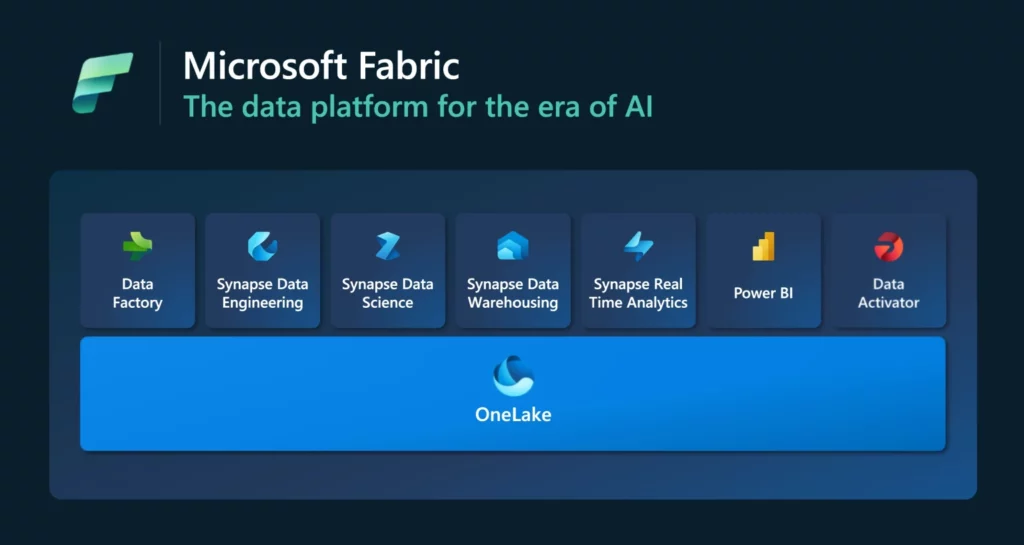‘Microsoft Build’ just kicked off and it’s shaping up to be a big AI focused event – and easily holds the announcement for the next revolution in the history of data analytics.
The future of data analytics has arrived – introducing Microsoft Fabric. It now helps you;
- Access all pools of data under a single platform
- Extract data without security concerns
- Fast track change by detecting anomalies in your data and
- Generate reports effortlessly with Copilot assistant.
Here’s our take on this revolutionary SaaS analytics platform
Microsoft has been the leader in producing analytics technologies, from the times of SQL Server to the times on Azure. Building an end-to-end analytics solution, regardless of the cloud platform, requires unifying different parts, defining an architecture before finally building the solution. Azure provided (and still provides) fantastic tools for each piece of functionality, such as data storage, data engineering, BI engineering, data modeling, real-time analytics, data governance and so forth. Though these services work well, putting them together and ensuring they worked in harmony was a lot of work – data formats, provisioning, data movement, networking and more…
What makes it a seamless fabric?
Microsoft Fabric brings all the functionalities into one box, and they work effortlessly. There’s no need to set-up or provision infrastructure. At the center of all this is OneLake — think OneDrive for your data and analytics. You can even sync it with your Desktop – yes, just like OneDrive!
Microsoft Fabric is designed on the concept of personas: data engineering, data warehouse, data science, and so on. Each persona works with the same data that is stored on OneLake – and data is stored as Delta files. Which means data lakehouse, data warehouse, data engineering, data science, real-time analytics, and wait for it… even Power BI… (which is now part of Microsoft Fabric) accesses the same set of Delta files – no data movement!
This means you no longer need to take data from the data lake to your data warehouse and then import it into Power BI. The data all stays as Delta files on OneLake and of course, “Shortcuts” – to access data on other cloud storages including Azure, Amazon, and Google from where they reside resulting in no data movement whatsoever!
 Source: Microsoft
Source: Microsoft
What other features does it include?
Microsoft Fabric has unified data governance, One Security. This means that you apply security rules once, and the governance module will ensure that the rules are applied across the board, irrespective of which persona accesses the data. For instance, users who only have access to a portion of the data will be transparently shown only the data they are allowed to see no matter which persona they look at. Sensitivity labels flow all the way from its origin to where the data is surfaced, including when it finally surfaces on Excel for analysis.
Microsoft Fabric is built into Microsoft 365, enabling intuitive use of data for business users. Insights can be brought into action with a brand-new module called Data Activator that allows you to trigger actions by looking for anomalies in your data.
And to top it all off – Microsoft Fabric is AI-powered, with copilot acceleration and GPT on your data. You just ask Power BI to create the reports you have in mind. Or build custom GPT components into your Apps.
We at Intellint (Fortude’s Data & AI brand) are very excited about Microsoft Fabric – it’s a definite game changer. We can’t wait to implement it for our customers and see their productivity and growth leapfrog.
Microsoft Fabric is the biggest launch of a data product from Microsoft since the launch of SQL Server.
Satya Nadella
Microsoft Fabric is now in Public Preview. Learn more today!
Gogula Aryalingam
AVP – Data & AI
Subscribe to our blog to know all the things we do


